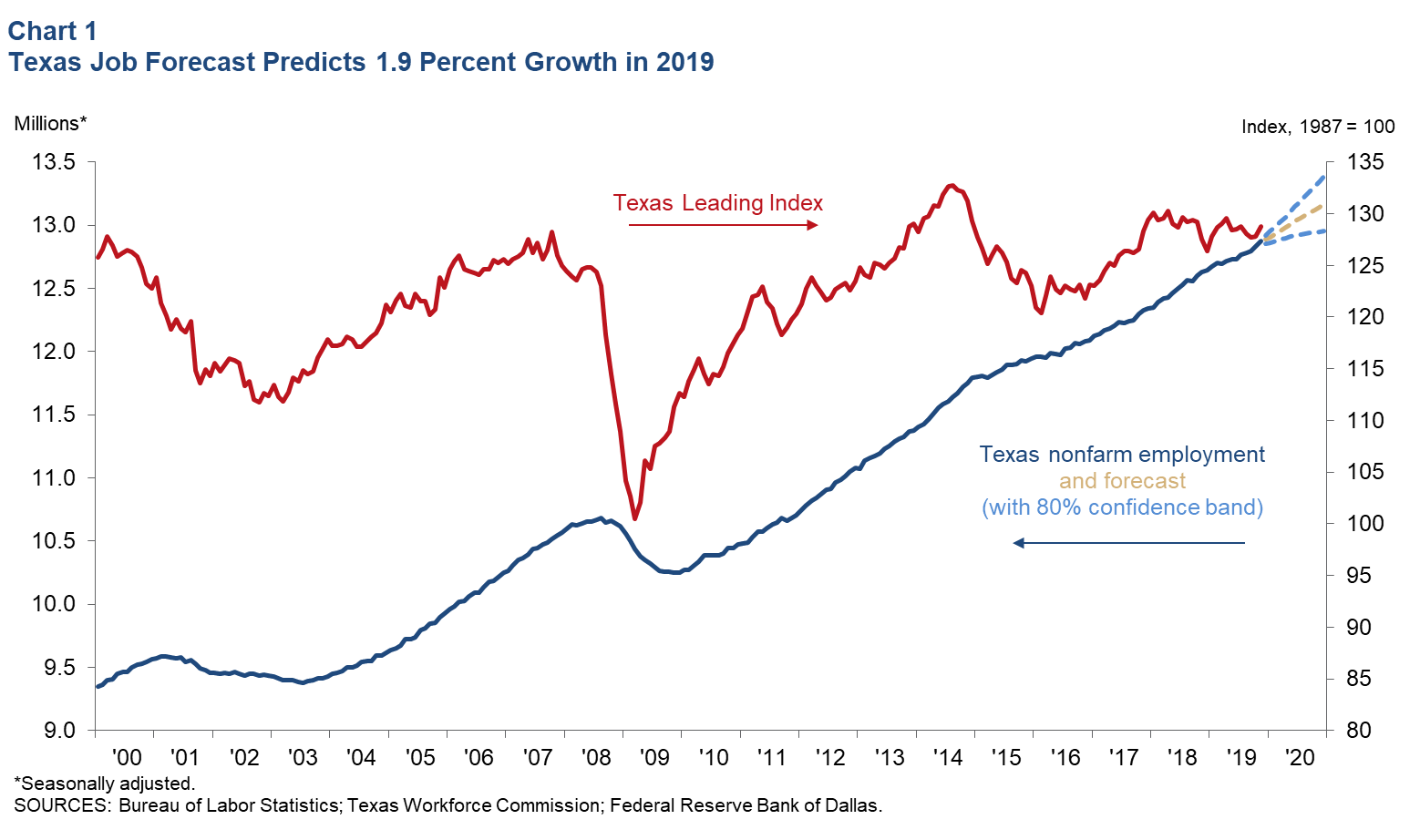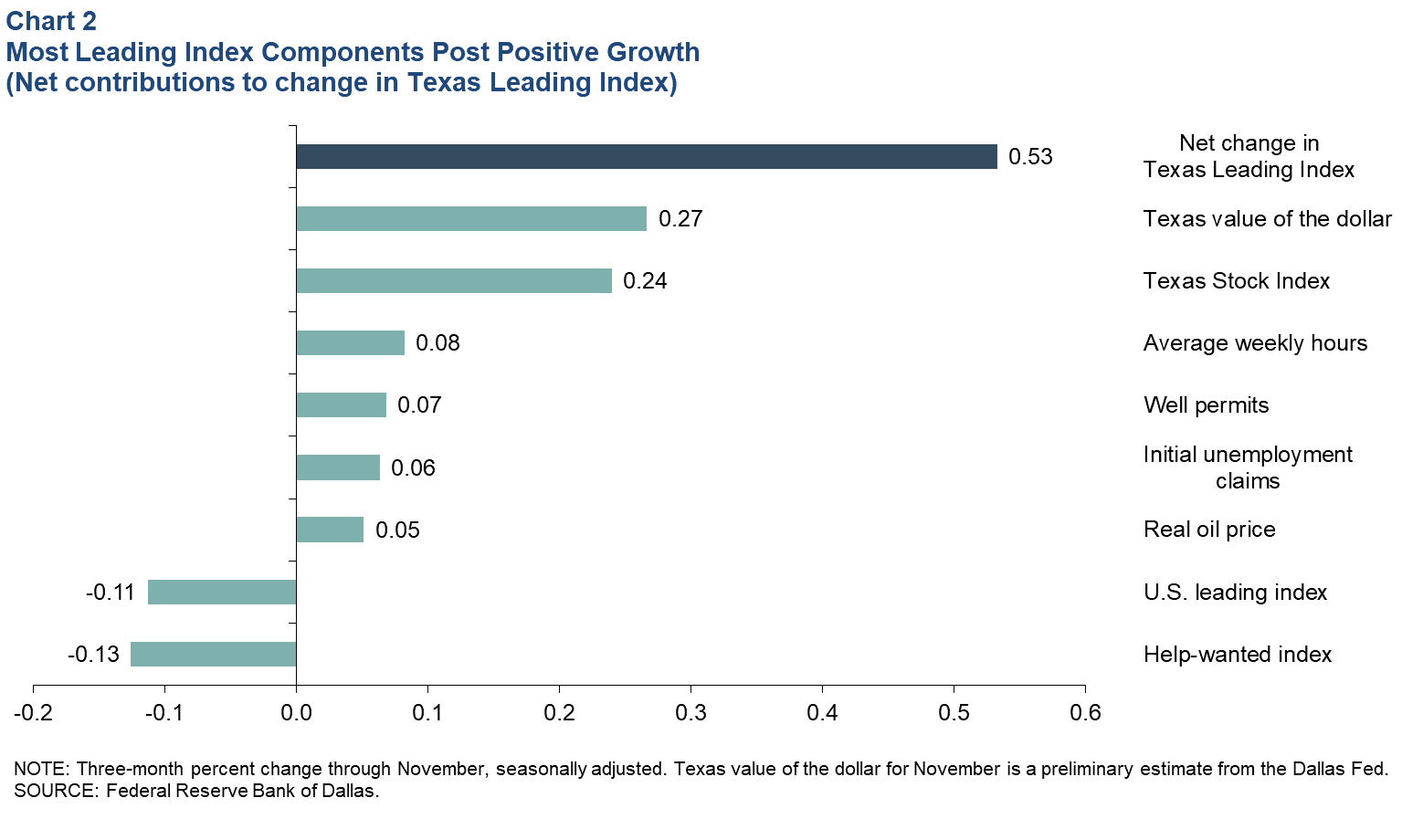Texas Employment Forecast

December 20, 2019
Incorporating November job growth of 4.0 percent and a pickup in the leading index, the Texas Employment Forecast suggests jobs will grow 1.9 percent this year (December/December), with an 80 percent confidence band of 1.6 to 2.2 percent. Based on the forecast, 243,500 jobs will be added in the state this year, and employment in December 2019 will be 12.9 million (Chart 1).
“Texas employment growth strengthened in November,” said Christopher Slijk, Dallas Fed assistant economist. “Growth in the goods-producing sector surged, with construction employment accelerating and manufacturing rebounding sharply from October’s weakness.”
“Service sector employment remained robust, led by growth in health care and trade, transportation, and utilities. Combined with the uptick in the Texas Leading Index, such growth suggests a solid pace of economic expansion going into 2020,” Slijk said.
The Dallas Fed’s Texas Leading Index increased 0.5 percent over the three months ending in November (Chart 2). The increase was broad-based across most indicators, with only modest declines in the U.S. leading index and help-wanted advertising dragging on the index.
A decline in the Texas value of the dollar, which increases the competitiveness of state exports, was the largest positive contributor to the index, followed closely by gains in the stock prices of Texas companies. Energy indicators were mildly positive, while a slight increase in average weekly hours worked in manufacturing and a slight decrease in new claims for unemployment insurance also buoyed growth in the index.


Next release: January 31, 2020
Methodology
The Dallas Fed Texas Employment Forecast projects job growth for the calendar year and is estimated as the 12-month change in payroll employment from December to December. The forecast reported above is a point estimate with 80 percent confidence bands; in other words, the true forecast lies within the bands on Chart 1 with 80 percent probability.
The Dallas Fed Texas Employment Forecasting Model is based on a transfer function that utilizes past changes in state employment along with past changes in the Dallas Fed Texas Leading Index (TLI). Changes in the TLI have an impact on employment with a lead time of three months, and the effect dies out slowly over time. The regression coefficients on lagged changes in employment and the TLI are highly statistically significant, and the model as a whole has been accurate relative to other forecasters over the past two decades.
The forecasting model has been in use at the Dallas Fed since the early 1990s, and the employment forecast has been published in the Western Blue Chip Economic Forecast (WBCF) since 1994. Phillips and Lopez (2009) show that the model has been the most accurate in forecasting Texas job growth relative to other forecasters in the WBCF. In particular, the model had the lowest root mean squared error and has been the closest to the actual the most times (nine of the last 17 years) out of five forecasters that have consistently participated in the survey.
For more details about the model and its performance, see “An Evaluation of Real-Time Forecasting Performance Across 10 Western U.S. States,” by Keith R. Phillips and Joaquin Lopez, Journal of Economic and Social Measurement, vol. 34, no. 2–3, December 2009.
Contact Information
For more information about the Texas Employment Forecast, contact Keith Phillips at keith.r.phillips@dal.frb.org.